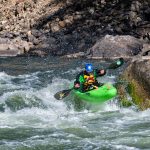Aspens home for unique birds

If you take a stroll amongst an aspen grove, you will quickly realize aspens are bustling with birds this time of year. Just like you can go to the river and expect to see an American dipper, if you go to the aspens, you’ll surely find several species of birds strongly associated with the trees.For instance, the red-naped sapsucker has just migrated north from warmer climates, and is now setting up camp for the summer. Their work is demanding – the sapsucker must find and establish suitable territory, build a new home, find a spouse, lay eggs, hatch chicks, feed chicks, protect chicks and teach the chicks how to fend for themselves. All this will occur over the next couple of months.Like most birds, sapsuckers aim to have their young in the early summer when food is the most plentiful. The first step to setting up their camp requires establishing and defending their territory. Males generally arrive on the scene early and begin assessing food sources, cover, temperature, competition and nesting sites.
Rhythmic arrivalMost male songbirds sing to announce their presence to other competing males, and to attract females. But sapsuckers, like all other woodpeckers, don’t sing – they “drum.” Drumming is a rhythmic series of taps, generally on the top of a dead tree, which resonates throughout the area and announces, “I’m here, this is my space, is anybody out there?” Often you’ll hear another male return the identical series of taps, which lets the other bird know there is in fact another male close by who likes the site as well. The male birds then compete to establish a physical territory. This can prevent competition for nesting sites and food sources, and eventually, the birds arrive at an agreement of “you camp there and I’ll camp here.” Often, an adult male will return to the same site as the prior year, especially if he and his mate had raised a successful brood.When it comes time for pecking out a nesting cavity, several sites may be pursued. A successful nesting site must have warm temperatures, abundant nearby food sources, good cover for coming and going, and protection from hostile weather. Ultimately, the female will decide where it is best to nest, and raise their young.As we get into early summer, the sapsucker chicks will hatch. The hungry chicks cry incessantly for the parents to bring them food. Listen for this crying while you are hiking or biking through the aspens.
If you sit quietly and are patient, you can observe the parents returning to the nest and feeding insects to each of the chicks.Honk, honk, honkSeveral other species of birds are likely to be seen in the aspens. House wrens, tree swallows and violet-green swallows take advantage of old or unused woodpecker nesting cavities. These birds require a pecked out nesting cavity, but lack the appropriate bill to carry out such a task. So these birds rely on abandoned woodpecker nesting cavities for their nesting sites.Warbling vireos are also present in the aspens, and can be recognized by the constant warbling song coming from a concealed perch high in the treetops. They are difficult to see, but if you catch a glimpse of this drab yellow-gray bird, it has a sturdy bill with a slight hook at the tip. Like the other birds mentioned, the vireo is an insect eater, and they especially like moth and butterfly caterpillars. In any aspen grove, there are many scattered dead and dying trees. These are favorite places for nuthatches. The white-breasted, red-breasted, and pygmy nuthatches are insect gleaning birds, which start near the top of the tree, and spiral down the tree’s trunk headfirst nabbing little goodies along the way.
They can be recognized by their calls which sound like a nasal honk, honk, honk – like someone squeezing a toy horn.An aspen grove is a peaceful respite from our bustling world. Take a pair of binoculars with you, settle in on a comfortable log and let the magical world of birds come to you.Tom and Tanya Wiesen are owners of Trailwise Guides, a year-round guide service in the Vail valley specializing in hiking, biking, and natural history tours. Contact Trailwise at (970) 827-5363.










